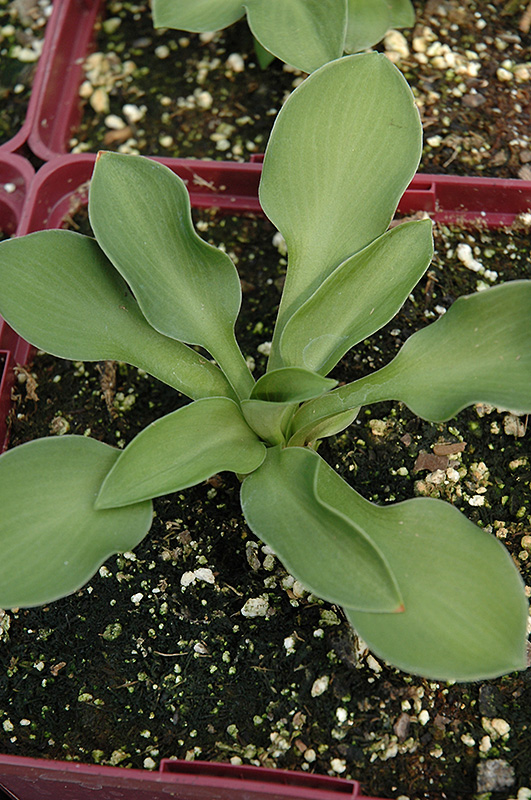Know Before You Go!
Get notified before our plants arrive in stores near you.
Plant Care Library

Green Mouse Ears Hosta foliage
Green Mouse Ears Hosta foliage
(Photo courtesy of NetPS Plant Finder)
Plant Height: 3 inches
Flower Height: 6 inches
Spacing: 10 inches
Sunlight:
![]()
![]()
Hardiness Zone: 3a
Other Names: Plantain Lily, Funkia
Description:
This variety has tiny, near rounded green leaves that are cupped; spikes of lavender striped flowers in early to mid-summer; a dainty little plant for a small space or container
Ornamental Features
Green Mouse Ears Hosta features dainty spikes of lavender tubular flowers rising above the foliage from early to mid summer. Its attractive oval leaves remain green in color throughout the season.
Landscape Attributes
Green Mouse Ears Hosta is a dense herbaceous perennial with tall flower stalks held atop a low mound of foliage. Its medium texture blends into the garden, but can always be balanced by a couple of finer or coarser plants for an effective composition.
This is a relatively low maintenance plant, and is best cleaned up in early spring before it resumes active growth for the season. Gardeners should be aware of the following characteristic(s) that may warrant special consideration;
- Insects
Green Mouse Ears Hosta is recommended for the following landscape applications;
- Mass Planting
- Border Edging
- General Garden Use
- Groundcover
Planting & Growing
Green Mouse Ears Hosta will grow to be only 3 inches tall at maturity extending to 6 inches tall with the flowers, with a spread of 12 inches. When grown in masses or used as a bedding plant, individual plants should be spaced approximately 10 inches apart. Its foliage tends to remain low and dense right to the ground. It grows at a slow rate, and under ideal conditions can be expected to live for approximately 10 years. As an herbaceous perennial, this plant will usually die back to the crown each winter, and will regrow from the base each spring. Be careful not to disturb the crown in late winter when it may not be readily seen!
This plant does best in partial shade to shade. It prefers to grow in average to moist conditions, and shouldn't be allowed to dry out. It is not particular as to soil type or pH. It is somewhat tolerant of urban pollution. This particular variety is an interspecific hybrid. It can be propagated by division; however, as a cultivated variety, be aware that it may be subject to certain restrictions or prohibitions on propagation.
A NetPS Plant Finder tool
